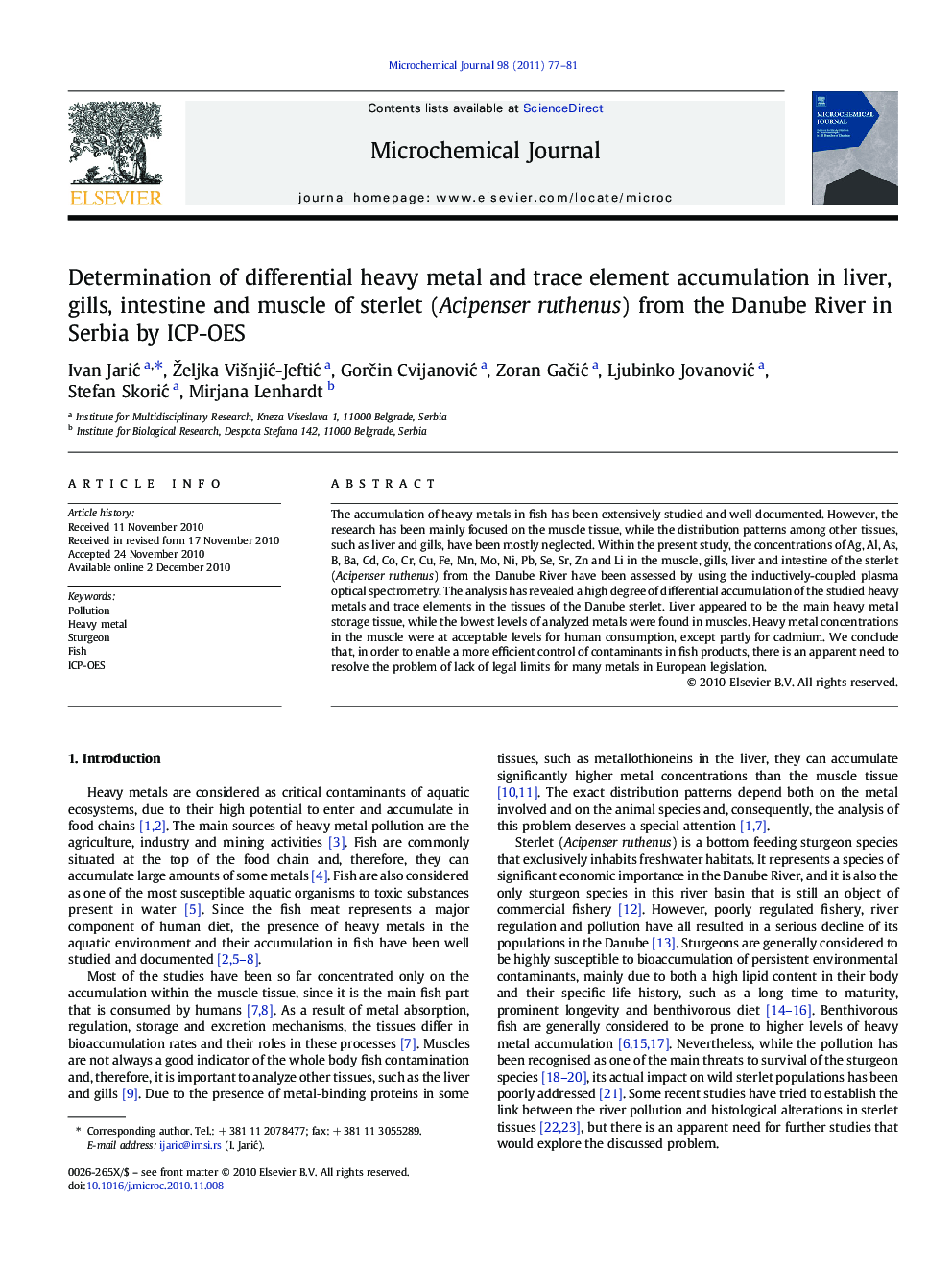| Article ID | Journal | Published Year | Pages | File Type |
|---|---|---|---|---|
| 10556911 | Microchemical Journal | 2011 | 5 Pages |
Abstract
The accumulation of heavy metals in fish has been extensively studied and well documented. However, the research has been mainly focused on the muscle tissue, while the distribution patterns among other tissues, such as liver and gills, have been mostly neglected. Within the present study, the concentrations of Ag, Al, As, B, Ba, Cd, Co, Cr, Cu, Fe, Mn, Mo, Ni, Pb, Se, Sr, Zn and Li in the muscle, gills, liver and intestine of the sterlet (Acipenser ruthenus) from the Danube River have been assessed by using the inductively-coupled plasma optical spectrometry. The analysis has revealed a high degree of differential accumulation of the studied heavy metals and trace elements in the tissues of the Danube sterlet. Liver appeared to be the main heavy metal storage tissue, while the lowest levels of analyzed metals were found in muscles. Heavy metal concentrations in the muscle were at acceptable levels for human consumption, except partly for cadmium. We conclude that, in order to enable a more efficient control of contaminants in fish products, there is an apparent need to resolve the problem of lack of legal limits for many metals in European legislation.
Related Topics
Physical Sciences and Engineering
Chemistry
Analytical Chemistry
Authors
Ivan JariÄ, Željka ViÅ¡njiÄ-JeftiÄ, GorÄin CvijanoviÄ, Zoran GaÄiÄ, Ljubinko JovanoviÄ, Stefan SkoriÄ, Mirjana Lenhardt,
